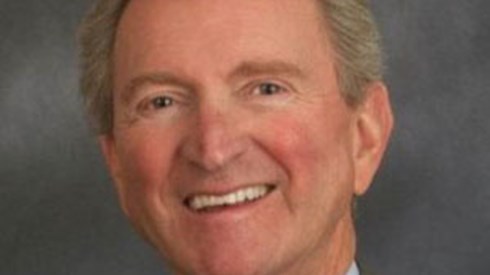Jay Branum: Guiding South Carolina's Captive Insurance Growth

March 02, 2020

Jay Branum, director of captives at the South Carolina Department of Insurance, has spent virtually all his professional life in the commercial insurance world. His career affords him particular advantages as a captive insurance regulator.
His involvement with captive insurance company issues goes back to the 1980s when he began work in Bermuda with Skandia International Risk Management Ltd. At the time, Skandia was one of the world's largest captive insurance management firms, and Mr. Branum moved up the ranks to become Skandia's executive vice president.
In addition, Mr. Branum served as president of a joint venture reinsurance company formed by American Reinsurance Co.—now Munich Re America—and an internationally diverse group of nine other insurers and reinsurers.
Mr. Branum joined the South Carolina Department of Insurance in late 2013 and has overseen the state's tremendous growth as a captive insurance domicile. At the end of 2019, South Carolina had 179 captive insurance companies, up from just 118 in 2013, an increase of more than 50 percent in just 6 years.
At the end of 2019, South Carolina had nearly 180 captives. The state has experienced very rapid growth as a captive insurance domicile. What are some of the reasons for that captive insurance growth?
There are several reasons. I came on board near the end of 2013, which was the end of a period of stagnation. There had been flat-to-slow growth. Once I came on board, we stripped everything apart and asked ourselves what were the necessary things to do. Does this make sense? If not, let's cut it out. We tried to rationalize and streamline all the processes, with a particular focus on the licensing issue process. We made licensing a lot more business friendly and rational. In addition, I met one-on-one with all the captive managers that had a presence in South Carolina. I spent an hour plus with each one of them during my first week on the job. That was appreciated, and the fact that I had come out of a business background, as opposed to a background of being a career regulator, enabled me to establish a rapport more readily and with more authenticity than would have been the case otherwise.
The captive job I stepped into in November 2013 was a newly created position. Previously, there had been no one designated to head the state's captive insurance division within the insurance department and to spearhead the relationship building and maintenance with members of the captive insurance community, as well as to put out a consistent message of commitment to the captive insurance sector on the part of the state through myself and my team. All of that resonated in a positive way. We also made some statutory changes that were well received. We got attention from the captive insurance world inside the state and more broadly. People perked up and said, "South Carolina is back in business." When business was brought to us and we performed well and didn't drag our feet and didn't impose ridiculous requirements, word got around that South Carolina is a positive place to establish a captive insurance company.
Do you see South Carolina's growth as a captive insurance domicile continuing?
I do, but it is going to be hard to say how dramatic that growth is going to be. There is a lot of anecdotal evidence of hardening in the market. The feedback that we get is that from one line of business to another, especially in the casualty arena, rates are hardening and, to a certain degree, in property as well. That kind of environment typically is most conducive to the formation of new captive insurance companies. When capacity is more expensive and harder to come by and conditions tighten up, people start to look at alternatives to minimize their dependence on a cyclical market. Captives are one thing that comes to mind. People look at captive insurance carefully, and if they have the right advisers and do the right kind of analytical homework, they may well come to the conclusion that it makes more sense for them to have a captive subsidiary and procure coverage through that subsidiary and build up some surplus over time to enable them to take more risks and have more flexibility in structuring their programs and risk taking.
It is not uncommon for domiciles to update their captive insurance statutes. What are some of the more significant changes South Carolina lawmakers have made to the state's captive statute to keep South Carolina competitive with other domiciles?
In 2016, for example, we made a significant change to allow the formation and licensing of captive cell structures. That contributed to a certain groundswell of activity in that area by providing added flexibility. Some of our most prominent captive insurance company owners have elected to fund risks through cell entities. A couple of years ago, we took a more comprehensive assessment of the statute. We made wide-ranging changes, including allowing captives, with approval of their parents, to make loans to their parents and affiliates, as well as to reduce capitalization requirements for inactive captives. Looking ahead, we will, from time to time, identify changes that we think will be meaningful and helpful to the captive insurance program and our domicile.
Captive insurance growth has been slow in many domiciles over the last few years. Do you see growth picking up as conditions in the commercial market tighten?
I think it is reasonable to expect that it will. You may not see dramatic growth in every state. The field is so crowded now. There are so many states in the game now. There are too many, actually. Not all of them have made investments in their insurance departments to understand what makes captive insurance companies different from traditional insurance companies.
What impact do you see the hardening market having on captive insurance?
If, for example, a captive insurer is writing a couple of lines of business, when the market hardens, a captive may add more lines of coverage. That is because there may be a real need to do so because rates are rising to a point where it is has become very unattractive to get coverage in the traditional market. Having a captive insurer that has built up capital and surplus taking on additional risk is one thing you would naturally expect in the context of markets hardening.
South Carolina has 39 risk retention groups (RRGs), which is more than most domiciles. Why have so many RRGs come to South Carolina?
We established ourselves as a hospitable place for the licensing of risk retention groups early on in our captive insurance program. Once a certain momentum was achieved, it was sustained. Once a domicile gets a reputation as established and knowledgeable, and you go to the next step, which South Carolina has attained, which is having a captive insurance business servicing community within the state, added up together, that is quite meaningful. That translates into a real strength and selling point for South Carolina.
How do you stay up to date on captive insurance issues?
My email is always being bombarded from people in the captive insurance trade press, the broader insurance and reinsurance press, the risk management press. Between talking to people, going to conferences and being on the circuit, and having a line of communications with people in the field with fairly senior roles, listening to current and prospective clients about their prospective problems and challenges, I have more than enough input to get a sense of what is going on.
What have been some of the biggest surprises in the captive insurance industry?
What is going to be interesting in the next few years is to see how companies deploy existing captive insurers and set up new ones to fund emerging areas of risk. We saw a big surge of interest in medical stop-loss a few years ago. That interest hasn't gone away, but the interest has not continued to increase and dominate conversations compared to where it was in 2015. It is a resilient field. It is a resourceful field. It has a flexibility that can expand and contract as market forces create conditions that are either conducive to wider captive insurance utilization or less captive insurance utilization. That is one of the interesting things about the captive insurance arena.
What do you enjoy the most about your job?
I have a core team of people in the captive insurance division who are really smart, are really likable. What I enjoy the most is the collaboration with colleagues. I like opening their eyes to things that they haven't had occasion to take note of. Helping people broaden their perspectives and increasing their self-confidence and captive insurance fluency, all of that adds up to something that is meaningful in my mind and rewarding to me.
Mr. Branum is pictured above. (Courtesy photo.)
March 02, 2020
